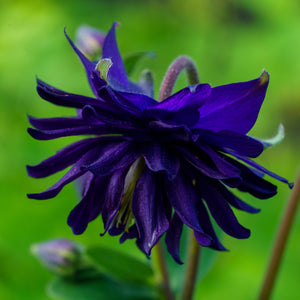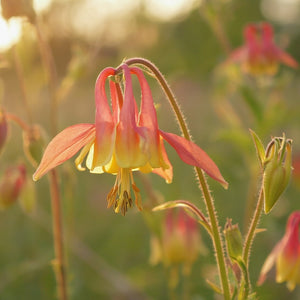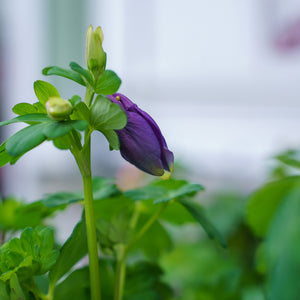The Aquilegia Guide
Aquilegia, commonly known as Columbine, is a graceful perennial cherished for its delicate, nodding flowers and attractive, fern-like foliage. With a wide variety of colors and intricate petal shapes, Aquilegia is a favorite in cottage gardens, woodland plantings, and pollinator-friendly landscapes. These hardy, low-maintenance plants thrive in various conditions, making them a versatile choice for gardeners of all experience levels. Here’s everything you need to know about growing and caring for Aquilegia.
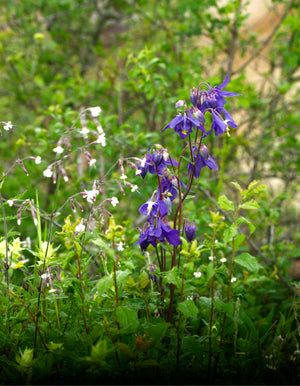
About
Aquilegia is a genus in the Ranunculaceae family, comprising over 70 species and numerous hybrids. Native to temperate regions of North America, Europe, and Asia, Columbine is known for its distinctive spurred flowers, which come in shades of blue, purple, red, pink, yellow, and white.
Popular cultivars include Aquilegia vulgaris var. stellata 'Black Barlow', which features deep purple, nearly black double blooms and Aquilegia caerulea 'Kirigami Light Blue & White', with its striking two-tone flowers. Some varieties, such as Aquilegia 'Biedermeier' and Aquilegia hybrida 'Spring Magic Mix', offer a range of colors within a single planting, creating a vibrant display.
Aquilegia is valued for its ability to attract hummingbirds, bees, and butterflies, making it an excellent choice for pollinator gardens. These plants are also deer-resistant and can naturalize over time, spreading gently to form charming drifts of color in spring and early summer.
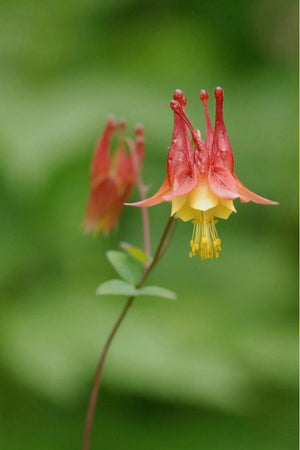
PLANTING
- USDA Hardiness Zones: Most Aquilegia varieties thrive in Zones 3-9, offering excellent cold tolerance.
- Soil: Prefers well-drained, rich, and slightly moist soil. Amending with organic matter improves soil quality and plant health.
- Sunlight: Grows best in partial shade but can tolerate full sun in cooler climates. Too much direct sunlight in hot regions may cause stress.
- Watering: Keep soil evenly moist but avoid waterlogged conditions. Established plants can tolerate some drought.
- Spacing: Space plants 12-18 inches apart to allow for proper air circulation and prevent fungal issues.
- Planting Time: Seeds - Sow indoors 6-8 weeks before the last frost or directly in the garden in spring or early fall. Transplants - Plant in spring or fall when temperatures are mild to help plants establish before extreme heat or cold.
To plant Aquilegia from seed, scatter them lightly over the soil surface and press them down gently, as they require light for germination. Keep the soil moist until seedlings emerge. For best results, cold stratify seeds for 3-4 weeks before planting to improve germination rates.
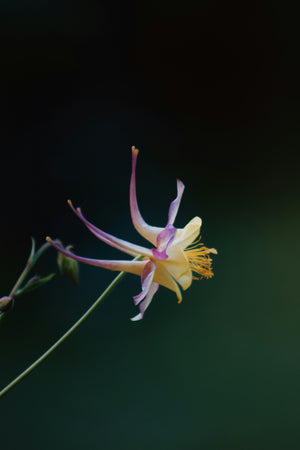
CARE
- Watering: Maintain consistent moisture during the growing season, but allow the top inch of soil to dry slightly between waterings.
- Fertilizing: Apply a balanced, slow-release fertilizer in early spring to encourage strong growth and flowering.
- Pruning: Deadhead spent blooms to prolong the flowering period and reduce self-seeding. Cut back foliage in late fall or early spring to refresh growth.
- Pests & Diseases: Generally low-maintenance but may attract aphids or be susceptible to powdery mildew in humid conditions. Ensure good airflow and remove affected leaves as needed.
- Dividing: Not necessary for most varieties, but overcrowded clumps can be divided in early spring or fall.
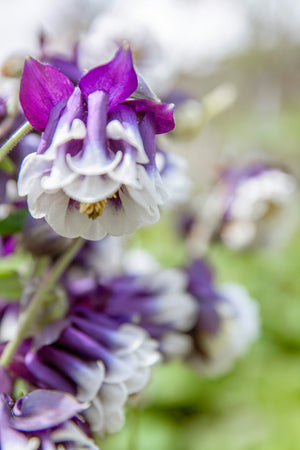
HOW TO USE
Aquilegia’s delicate flowers and airy foliage make it a stunning addition to a variety of garden settings:
- Pollinator Gardens: Hummingbirds and bees are drawn to the nectar-rich blooms, making Aquilegia a great choice for wildlife-friendly plantings.
- Cottage Gardens: Perfect for naturalistic, informal gardens, where its graceful blooms add charm and movement.
- Woodland Gardens: Thrives in dappled shade under trees and alongside other shade-loving perennials.
- Borders & Pathways: Compact varieties like Aquilegia vulgaris 'Winky Rose and Rose' and Aquilegia 'Winky Rose and White' work well along garden edges.
- Cut Flower Gardens: Long-lasting blooms make excellent additions to floral arrangements.
Pair Aquilegia with other spring bloomers like Pulmonaria, Tiarella, and Brunnera to create a soft, romantic palette in shaded garden beds. For a contrasting look, plant alongside early Allium varieties or hostas.
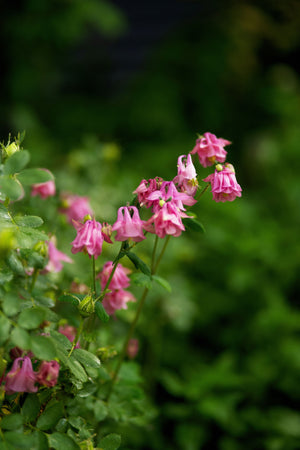
Common Questions
- Are Aquilegia deer resistant? Yes, Aquilegia is deer-resistant due to its mildly toxic foliage, making it a great choice for gardens prone to deer browsing.
- Are Aquilegia perennials? Yes, Aquilegia is a hardy perennial that returns year after year in USDA Zones 3–9.
- Are Aquilegia poisonous? While Aquilegia is mildly toxic if ingested, it's not considered highly dangerous. Keep away from curious pets and children.
- Are Columbine and Aquilegia the same thing? Yes, Columbine is the common name for plants in the Aquilegia genus.
- Do Aquilegia flower the first year? If started indoors early enough, some Aquilegia may bloom in their first year, but most varieties flower in their second season.
- Do Aquilegia spread? Aquilegia can self-seed in the garden and form small colonies, especially in favorable conditions. They are not aggressive spreaders.
- How tall do Aquilegia grow? Most varieties grow 12–36 inches tall depending on the cultivar.
- How to care for Aquilegia? Provide partial shade, well-drained soil, and moderate moisture. Deadhead regularly and prune old foliage in spring or fall.
- How to deadhead Aquilegia? Snip off spent flower stems at the base once blooming is complete to encourage new blooms and prevent unwanted self-seeding.
Conclusion
Aquilegia is a graceful and adaptable perennial that adds a whimsical charm to any garden. With its distinctive blooms, deer resistance, and pollinator-friendly appeal, Columbine is a must-have for naturalistic landscapes and shaded borders. Whether you choose the deep hues of Aquilegia vulgaris 'Black Barlow', the airy elegance of Aquilegia 'Kirigami Rose & Pink', or the compact charm of Aquilegia canadensis 'Corbett', there's a Columbine variety for every gardener. Explore our collection and bring this springtime favorite into your landscape.
The Aquilegia Collection
Sold Out
Sold Out
Sold Out
Sold Out
Sold Out

